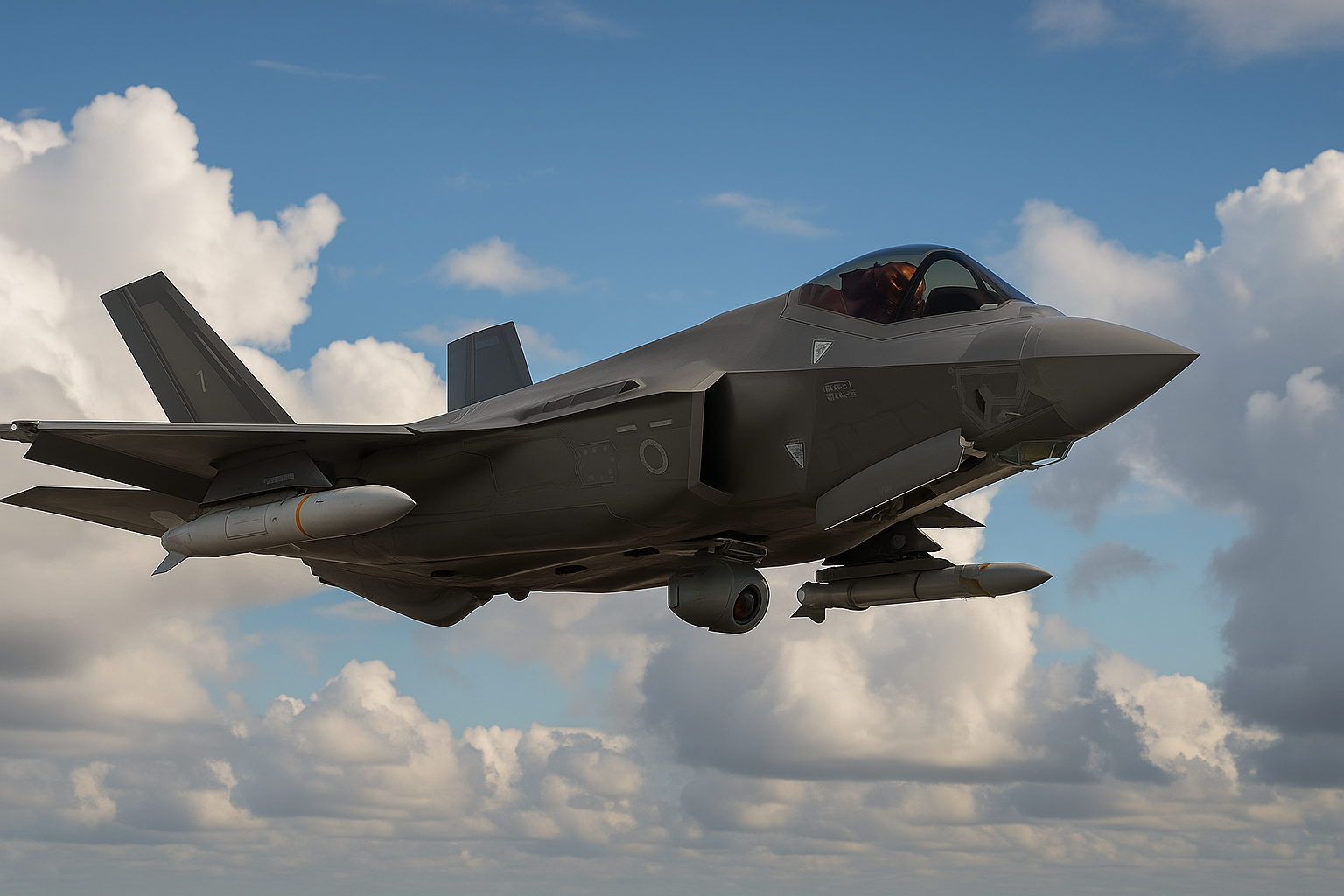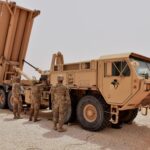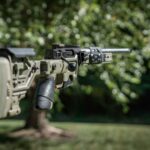Foreign air forces that bought the F-35A woke up this week to a blunt statement from Major Gen. Jeffrey Harrigian, the U.S. Air Force officer who runs the program. He told Reuters on April 7 that engineers had started scoping a new radar, fresh avionics, and even a more efficient engine because present hardware “cannot keep pace with rapid technology advances by potential adversaries”. The jet is still a year from initial combat status, yet its core systems already trail the threat curve.
That single remark rips a hole in a decade of optimistic briefings. The cost of the F-35 program increased by $26 billion last year, bringing the total to $438 billion, according to Pentagon data. None of the 120-plus aircraft delivered so far contains the technology Harrigian now describes.
Why the F-35 Block 4 Upgrade Suddenly Feels Urgent
If Congress accepts the plan, taxpayers will pay for another full round of research, manufacturing, and flight test before every squadron pilot flies a single live mission.
Program insiders insist the move is prudent. They note that the Chinese J-20 has progressed from taxi trials to operational units in less than five years. Russian engineers push the Su-57’s avionics hard, while European radar houses sell gallium-nitride arrays with far better output than anyone expected in 2001, when the F-35’s baseline was frozen. Under that glare, senior officers fear the jet will turn into an expensive niche platform that needs help to survive inside modern air-defense bubbles.
International Buyers Face Retrofit Costs and Legal Uncertainty
The emerging wish list centers on three parts:
- Mission systems: a faster liquid-cooled processor rack with enough throughput to fuse external data, jam hostile emitters, and push targeting cues to allied shooters.
- Sensors: a wider-band active electronically scanned array able to flip between air-to-air search, synthetic-aperture mapping, and long-range electronic-attack modes without overheating.
- Propulsion: either a re-cored F135 or an all-new variable-cycle engine that yields more thrust, extra electric power, and lower specific fuel burn.
Each element costs billions. Taken together, the bill could match the development price of a brand-new fighter. That prospect alarms foreign buyers that signed up on the promise of fleet commonality and predictable life-cycle cost. Canberra, Oslo, Rome, and Tokyo have only just finished paying concurrency surcharges. Now they face another round of retrofit charges and years of downtime while depot crews remove panels, reroute wiring, and requalify cabins.
Money is only part of the problem. The U.S. Air Force still vows it will call the F-35A combat-ready in August 2016. Achieving that milestone depends on software Block 3i, twenty jets modified for current fixes, a working version of the Autonomic Logistics Information System, and enough spare parts. Folding a wholesale redesign into that journey risks a clogged supply chain and a shortage of technicians who actually know the aircraft.
Many analysts see the announcement as an official admission that the “fifth-generation” brand conferred in 2004 has lost meaning. Electronics leap ahead so fast that a design locked down fourteen years ago now looks clumsy. Critics argue the Air Force and Lockheed Martin sold partners on exaggerated claims. Harrigian’s interview strips away that paper shield.
Allies also face legal puzzles. International co-production contracts assume that upgrades flow through normal configuration-control boards, yet no clause covers a complete change to radar, computers, and powerplant before the first export squadron reaches full operational status. Lawyers must decide whether Washington pays the non-recurring engineering, or whether each buyer shoulders a pro-rata share. In parallel, the US software stranglehold threatens F-35 foreign operations by limiting partners’ upgrade autonomy.
Lockheed’s public reaction stays neutral. Executives praise “continuous capability development,” but company insiders already lobby for government cash to launch prototypes tucked inside corporate labs. Pratt & Whitney markets a variable-cycle demonstrator promising twenty-five percent fuel savings at the cost of new inlets, new exhaust geometry, and a fresh logistics train. That path would shatter commonality among U.S. services, let alone foreign fleets.
The Joint Program Office claims the present plan echoes history. The F-16 Mid-Life Update began fifteen years after the Viper hit combat readiness. The F-15 received new processors a decade into service. But those jets entered war with credible baseline systems. The F-35 grapples with obsolescence before squadron commanders even write tactics.
Strategists at Air Combat Command see a deeper risk. If engineers tear out the core avionics and sensors, test pilots must validate the entire kill chain again—missile launch zones, fusion rules, electronic-attack modes, stealth signature under new apertures—while adversary kit keeps advancing. That loop can become endless.
Congress now holds the lever. Lawmakers can fund the design sprint, cap ambition, or force the Air Force to live with today’s hardware and accept narrower mission sets. None of those options matches the original sales pitch that billed the F-35 as the one jet that would do everything better than legacy fleets.
Beyond policy circles, line pilots stay silent. They still wait for a stable build of software Block 2B in training jets. Maintenance chiefs juggle spare parts that arrive late because subcontractors shifted machinery to the next production lot. Everyone in the field just wants a fighter that launches, fights, and lands without last-minute code patches.
International partners ask a simpler question: if the current design lags behind threats now, what confidence can they have that any upgrade frozen in 2020 will not feel old by 2027? No one at Wright-Patterson or Fort Worth has a tidy answer.
The next twelve months will show how far the Air Staff is willing to push risk. For now, the reality is stark. The most expensive fighter program in history needs a major overhaul before it even makes the front line.
TR-3 Problems Persist, Block 4 Still Not Ready – UPDATE MARCH 2025
Ten years have slipped by and the sweeping refit once sketched on a whiteboard has turned into a chain of incremental fixes. Lockheed delivered its first Technology Refresh-3 jets last August, yet each one rolled off the line with a payment holdback. The Pentagon now withholds $5 million on every aircraft until TR-3 hardware and software meet combat spec.
The long-delayed software that unlocks Block 4 capabilities remains in flight test. Company officials in early March told reporters that the upload window opens this summer if code stability improves. Early features include doubled memory, sharper cockpit graphics, and smoother fusion routines. Additional details confirm the jet will get new capabilities with summer software update, including improved electronic warfare and mission systems. The meatier items—ABMS gateway functions, anti-ship modes, and new radar patches—slide toward 2026.
Lockheed Martin Acknowledges TR-3 Upgrade Challenges
Budget math reflects frustration. A new defense bill would cut F-35 purchases in 2025 and delay deliveries, highlighting congressional impatience with the program’s ongoing issues. Congress trimmed the Fiscal 2025 buy from 68 to 58 jets, the sharpest single-year cut in program history, warning that future orders will proceed only after Block 4 proves itself.
The propulsion decision arrived last July. Defense leaders picked Pratt & Whitney’s Engine Core Upgrade for the existing F135. That choice avoids new inlets and tailpipes, keeps the multinational support chain intact, and cuts near-term risk. It also drops the adaptive-cycle XA100, which promised bigger cooling and range. Engineers say the re-cored engine gives just enough thermal margin to run next-generation sensors. However, recurring F-35 engine problems continue to raise concern across the program’s lifecycle.
Lockheed’s earnings reflect the churn. In late January the firm warned Wall Street that margins would sag through 2025 because TR-3 rework burns cash and pulls mechanics from other lines. Reuters noted the stock slipped after the call, even as broader markets nudged upward.
Inside the cockpit, instructors praise brighter displays but still teach tactics on legacy software while they wait for an operational-test green flag. Test officers now eye late 2025, two years beyond the schedule briefed in 2020.
Abroad, Norway and Australia signed bespoke maintenance deals to keep their Block 3 fleets airworthy until upgrade kits arrive. Each retrofit needs roughly six months of downtime, which stretches the queue into 2028.
Planning never sleeps. Lockheed and the Joint Program Office already staff a Block 5 study. Early sketches show a broader-band radar tagged AN/APG-85 and an electronic-warfare cage geared for low-power crude emitters. The first design review sits in 2027, hinting at another retrofit wave in the early 2030s.
Capitol Hill staffers notice the drift. A fresh report by the Government Accountability Office urges Congress to track propulsion modernization as a stand-alone account so cost growth cannot hide inside larger ledgers.
For squadron crews the tally is mixed. F-35s fly daily deterrence patrols over Eastern Europe and the Middle East, but they still use the same radar and engine architecture signed off in 2001. Technology Refresh-3 and the Engine Core Upgrade keep the jet on life support, yet neither delivers the step change first promised in 2015. Obsolescence proved real; beating it remains a slow grind with no finish line in sight.
REFERENCE SOURCES
- https://www.reuters.com/markets/us/sp-nasdaq-futures-regain-some-ground-after-tech-rout-2025-01-28/
- https://www.reuters.com/world/us/pentagon-withholds-5-mln-per-f-35-jet-deliveries-resume-2024-08-29/
- https://www.defensenews.com/air/2024/12/10/defense-bill-would-cut-f-35-purchases-in-2025-delay-deliveries/
- https://www.defensenews.com/air/2025/03/04/f-35s-to-get-new-capabilities-with-summer-software-update/
- https://www.airandspaceforces.com/first-f-35-block-4-updates-block-5/
- https://www.defensenews.com/air/2023/12/13/f-35-engine-upgrade-money-could-run-out-in-months-if-budget-not-passed/
- https://www.airandspaceforces.com/lockheed-new-engines-f-35/
- https://breakingdefense.com/2025/06/lockheed-believes-it-has-finished-f-35-tr-3-upgrade-executive-says/
- https://www.defenseone.com/business/2025/01/full-f-35-upgrade-package-might-not-happen-year-lockheed-says/402570/



